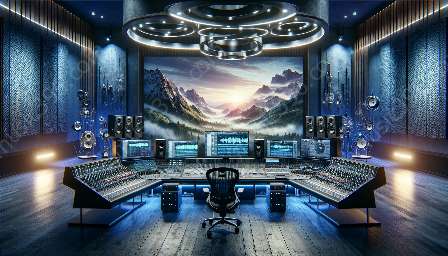Audio processing has evolved significantly with the advent of multi-channel and spatial rendering technologies. In this article, we will delve into the intricacies of multi-channel audio processing and spatial audio rendering, exploring their compatibility with digital audio signal processing and traditional audio signal processing methods.
Understanding Multi-Channel Audio Processing
Traditional audio processing primarily deals with mono or stereo signals, but multi-channel audio processing takes this a step further by incorporating multiple channels to create a more immersive audio experience. Multi-channel audio processing involves the manipulation and control of audio signals distributed across several channels, allowing for spatial placement and directionality.
Key Aspects of Multi-Channel Audio Processing:
- Channel Configuration: Multi-channel audio can be configured in various setups such as 5.1, 7.1, or even higher configurations, each offering a unique spatial audio experience.
- Signal Routing and Mixing: Multi-channel audio processing involves the routing and mixing of audio signals to different channels, enabling precise control over the spatial distribution of sound.
- Surround Sound Encoding and Decoding: Techniques such as Dolby Digital and DTS are employed to encode and decode multi-channel audio, enhancing the spatial audio experience.
Advancements in Spatial Audio Rendering
Spatial audio rendering focuses on creating a three-dimensional sonic landscape, providing listeners with a heightened sense of immersion and realism. This technology is instrumental in virtual reality, gaming, and entertainment content, elevating the audio experience to new levels of realism.
Key Elements of Spatial Audio Rendering:
- Binaural Audio: By simulating the natural cues received by the human ears, binaural audio rendering creates a convincing sense of space and directionality, replicating how sound is perceived in the real world.
- Ambisonics: Ambisonic audio processing encapsulates directional and distance-related information, allowing for the accurate placement of audio sources within a 360-degree sound field.
- Object-Based Audio: This approach treats audio sources as objects with spatial attributes, giving content creators precise control over the placement and movement of sound within a three-dimensional environment.
Integration with Digital Audio Signal Processing
The integration of multi-channel audio processing and spatial audio rendering with digital audio signal processing (DASP) has paved the way for cutting-edge innovations in the field of audio technology. DASP encompasses a wide range of signal processing techniques applied to digital audio, and its synergy with multi-channel and spatial audio enhances the overall audio production and reproduction capabilities.
Benefits of DASP in Multi-Channel and Spatial Audio:
- Real-Time Processing: DASP enables real-time manipulation of multi-channel and spatial audio, facilitating dynamic adjustments to enhance the immersive audio experience.
- Signal Optimization: Through DASP, multi-channel and spatial audio can be optimized for different playback systems, ensuring consistent audio quality across various devices and environments.
- DSP Algorithms: Leveraging sophisticated DSP algorithms, DASP enhances spatial audio rendering by applying complex processing techniques to create realistic and impactful sonic environments.
Synergy with Traditional Audio Signal Processing
While multi-channel and spatial audio technologies represent a leap forward in audio processing, they are compatible with traditional audio signal processing methods. In fact, traditional signal processing techniques can complement and further enhance the immersive qualities of multi-channel and spatial audio.
Harmonious Coexistence:
- Equalization and Dynamic Range Control: Traditional signal processing methods such as EQ and compression can be applied to individual channels within a multi-channel setup to fine-tune the overall audio output.
- Room Acoustics Correction: Spatial audio rendering can benefit from room correction techniques, ensuring that the reproduced audio adapts to the acoustic properties of the listening environment.
- Psychoacoustic Considerations: By integrating psychoacoustic principles, traditional signal processing can complement multi-channel and spatial audio, enhancing the perception of spaciousness and immersion.
Innovation and Evolution in Audio Technology
The evolution of multi-channel audio processing and spatial audio rendering has revolutionized the way we experience sound. These technologies have become integral components in the creation of immersive audio content, spanning industries such as cinema, gaming, music production, and virtual reality.
Future Trends and Applications:
- Personalized Audio Experiences: Advancements in multi-channel and spatial audio are driving the development of personalized audio solutions that adapt to individual preferences and playback setups.
- 3D Audio for Virtual Reality: Spatial audio rendering is at the forefront of delivering realistic spatial audio cues in virtual reality environments, enhancing the sense of presence and immersion.
- Interactive Audio Experiences: The integration of multi-channel and spatial audio with interactive media is creating new opportunities for dynamic, responsive audio environments that engage and captivate audiences.


